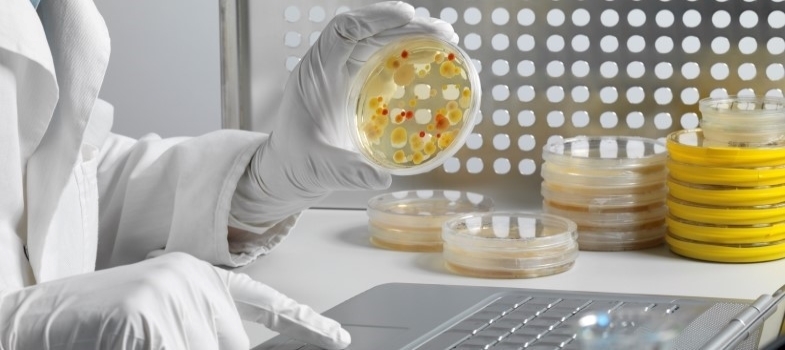5.3 Steps involved in sampling for AMR
You should consider the following steps when sampling people or healthcare facilities for AMR surveillance:
- Decide on your target population: What is the most relevant population to which you want to generalise the findings of your study or surveillance programme?
- Decide on the source population: In most cases, this will be individuals attending healthcare facilities such as hospitals or primary healthcare centres, but it could also be healthy individuals, especially for surveillance for carriage rather than disease.
- Outline a sampling frame: This might be a list of all hospitals or healthcare facilities in the target population. Remember that it is ideal to have at least 80% of the total target population listed in the sampling frame, although this can be difficult to achieve.
- Determine a sampling strategy, including how to select sampling units: Consider using probability sampling methods.
- Calculate the required sample size: This may require more than one calculation (such as the number of hospitals and then number of patients per hospital), and may require adjustment in light of non-statistical determinants of sample size. Be sure to consider whether you need to adjust the number of people to sample if the target bacterial species are not expected to be isolated from all samples.
Activity 9: Planning your own sampling
Think of a target population of interest to you in your role, or in your country more generally. If you can’t think of an example, consider the following population: neonates (infants less than four weeks old) with sepsis (bacterial infections of the blood). Think about an important research or surveillance question (such as the proportion of neonatal sepsis cases caused by a resistant pathogen) and use the space below to reflect on the steps for planning sampling:
- What are the possible source populations? What are the options in healthcare facilities and in community settings?
- Identify your target bacterial species. For your example, is it of more interest to focus on patients with clinical disease, or asymptomatic carriage of disease-causing bacteria?
- Identify a possible sampling frame, and the source of information for this sampling frame.
- What type of sampling method would you use? Are there advantages to using multistage sampling compared to simple random sampling?
- What considerations might you need to take into account when preparing a sample size calculation? Do you expect the target bacteria to be present in all the samples collected? Do you need to take dropout or clustering into account?
Discussion
How did you get on with this activity?
If you used the example of neonatal sepsis, you may have considered the following steps:
- In countries with good healthcare access, it might be assumed that almost all neonates with sepsis will present to a hospital and be admitted to a neonatal intensive care unit (NICU), in which case NICUs might be a good source. In countries with areas of limited healthcare access, many cases of neonatal sepsis might occur in the community, and never present to a health facility. Depending on your context, you might want to consider patients attended to by community maternal and infant health workers as well as patients presenting to health facilities.
- A range of bacterial species cause neonatal sepsis, especially Gram-negative pathogens such as Klebsiella pneumoniae, Pseudomonas aeruginosa or Acinetobacter spp. For this study, all bacteria found to be the cause of sepsis in neonates might be included.
- A possible sampling frame might be all neonates with fever and other typical symptoms of sepsis, attended to by a community health worker and/or a list of inpatients at a NICU or other health facility over the study period.
- Neonatal sepsis is relatively rare: around 2200 cases per 100,000 live births globally (Fleischmann-Struzek et al., 2018). If your target population includes only 10,000 births, you therefore might aim to include every neonatal sepsis case that arises in the source population; that is, around 220 cases. If you have data for the entire country, you might randomly sample medical facilities or communities, and then select all cases that arise within those primary sampling units (clustered sampling).
- There is a number of considerations related to the sample size. Your considerations might relate to the expectation of the frequency of the target bacteria being isolated. In neonatal sepsis, clearly some kind of bacteria will be identified in all cases, though there are different bacteria responsible, so not all cases may have the target pathogen if you are interested in only one type of bacteria that causes sepsis. You might also consider the anticipated drop-out rate. If you are conducting this analysis as part of a research study, the caregivers of some neonates might not wish to participate in a study, so you might need to be prepared to invite more caregivers to enrol their infants than the sample size requirement indicates.
5.2 Relating sampling units to isolates



